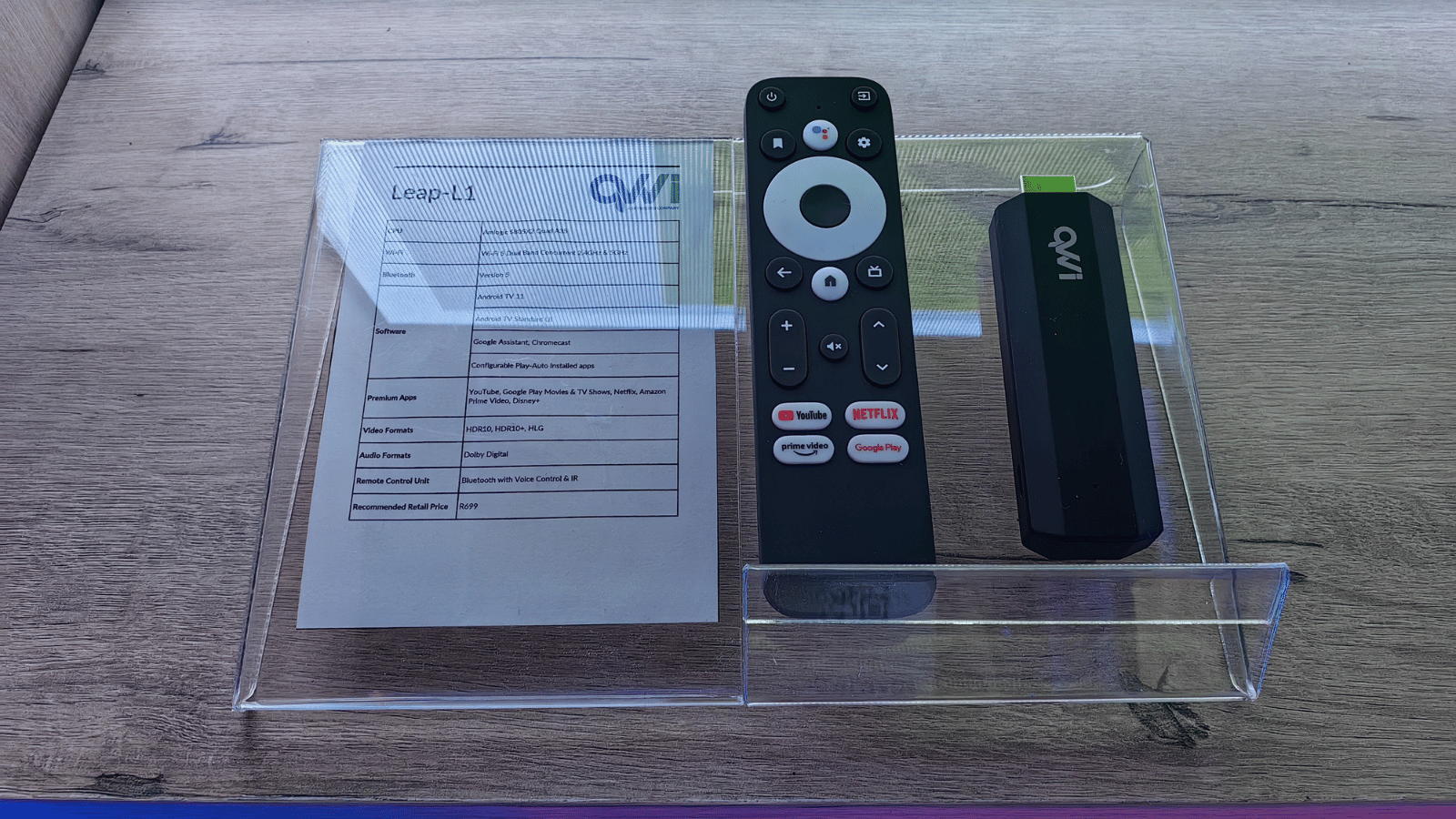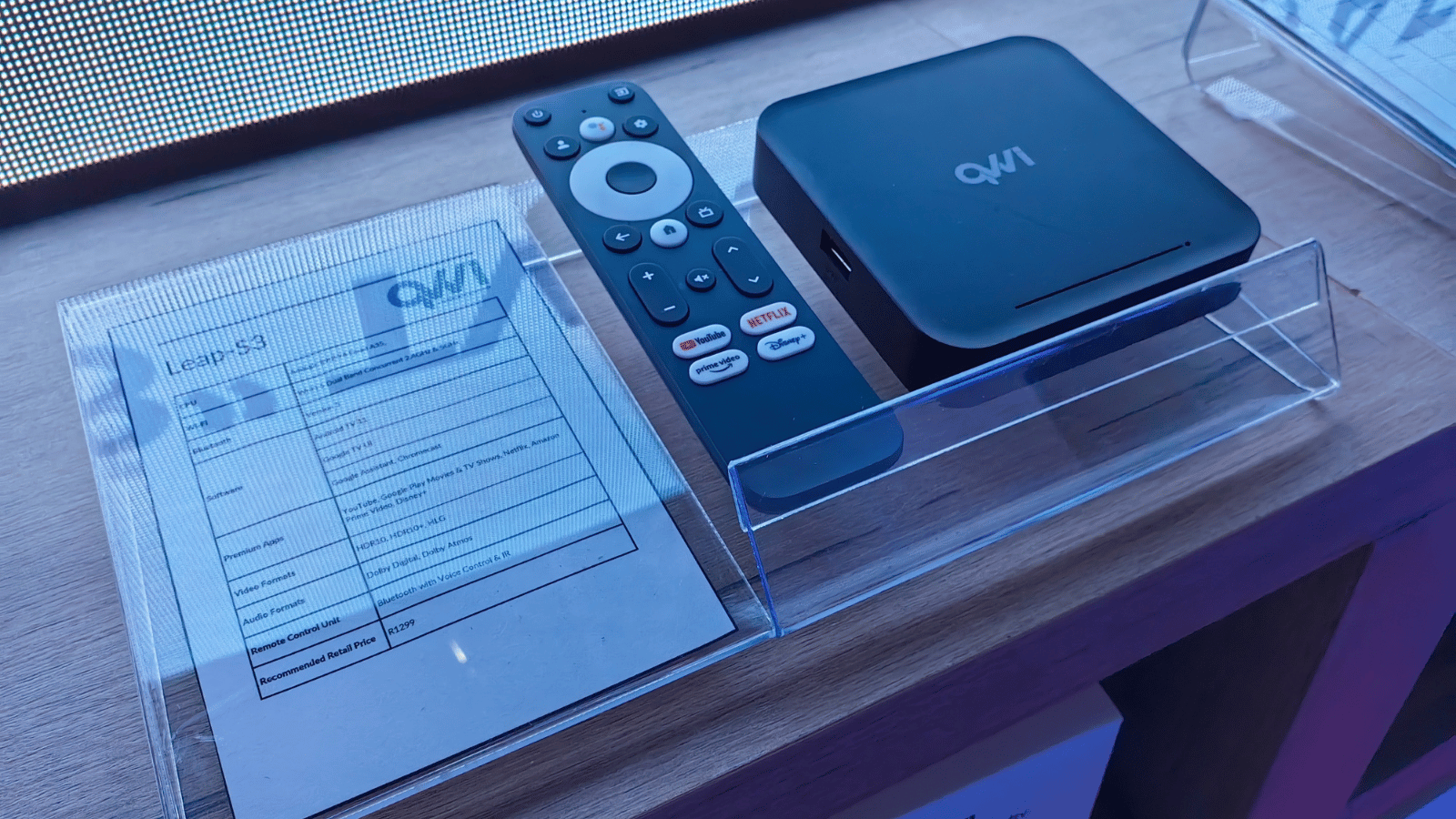QVWI held its local launch event at the Kyalami Grand Prix Circuit in Midrand earlier this week. If you’ve never heard of the brand before we wouldn’t blame you. It’s a new consumer electronics brand under Chinese holding company Skyworth Group and is prepping to roll out its ecosystem of devices, apps, and services to the South African market.
The complete list of hardware it plans to bring to SA isn’t yet finalized and it’s not going to launch every product all at once. But we have an idea of the gadgets it’ll start with, based on what it showed off at the event.
The QVWI stuff you can touch
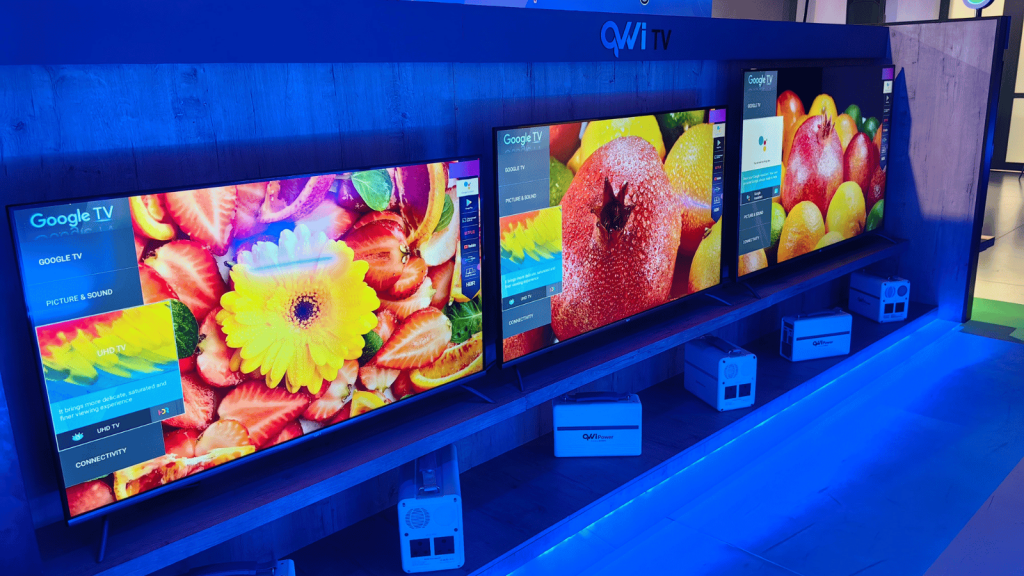 TVs
TVs
If you didn’t already think the current number of different brands and TV models made buying a new one hard enough, there’ll soon be a few more to choose from. QVWI’s Cast TVs range from 50in up to 98in and use Android TV 11 as their OS with a Google TV UI on top. QVWI seemed to lean pretty heavily on how its ‘partner’ Skyworth was Google’s number one integrated partner. These won’t be the only Google TVs available in the country when they get here so hopefully the new brand can leverage its Google partnership to set its TVs apart – like not having to buy a new one to get the newest versions of Android TV, that’ll be a good start.
Otherwise, there isn’t much to make QVWI’s TVs stand out, on the surface anyway. They’re using a direct LED backlight (instead of edge-lit) which is nice and they’re all using HDMI 2.1 ports, also nice. The standard range (50in – 65in) will have three HDMI ports and two USB ports while the premium range (75in-98in) adds one more HDMI port. The larger sets will also support Dolby Atmos audio.
Streamers
Joining the TVs are three models of streamers to give your old, dumb TV a few more years before it heads to the landfill. If the Leap L1, S2, and S3 sound familiar, you’re not the only one scratching your head. The L1 and S2 are stick-shaped while the S3 looks like any other black boxy streamer.
The main differences between the sticks are the slightly different cases and internal CPUs. Cases don’t matter much but the different CPUs could be why the L1 doesn’t offer a Google TV UI or Dolby Atmos support and why its recommended retail price is R700, R200 more than the S2. The S3 features all the same smarts as the S2 but with a few more ports to go with them and a bigger recommended price tag of R1,300.
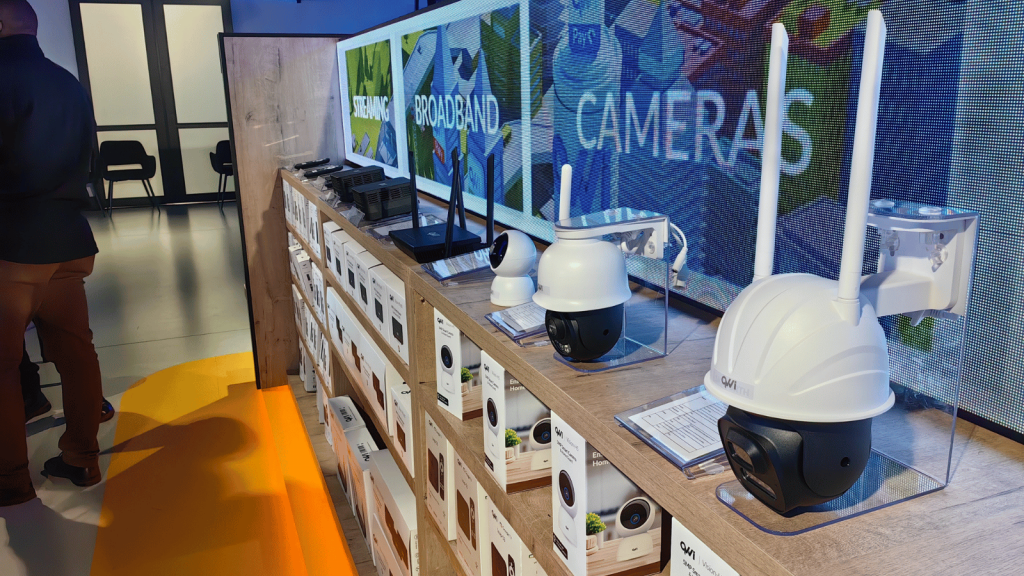 The rest
The rest
The TVs and streamers were joined by two models of Wi-Fi 6 routers, the Beam RN-680 and RN-685. Both support the Wi-Fi Alliance’s Wi-Fi EasyMesh standard which will allow them to form part of a mesh network. The RN-685 will cost around R1,400 while the RN-680 will be available as a single unit or in packs of two or three units for R1,500, R2,800, and R4,000 respectively.
If home security is a concern, the Vision-X3, -X4, and -H5 smart security cameras could put your mind at ease – if they end up coming to SA. Unlike what your neighbour probably has, these don’t need to connect to a digital video recorder. They all support up to a 512GB SD card and the option to upload footage to the cloud. Whether that’s QVWI’s own cloud, Apple’s iCloud, Google Drive, or OneDrive wasn’t provided. Hopefully, they’ll support all clouds.
We also spotted the Quest B27, a 27in desktop monitor that’ll be most suited for an office judging from the specs. It uses an ISP panel with a 1,920 x 1,080 resolution and a 75Hz refresh rate (although the ‘MAX’ in brackets leads us to believe it’ll take some persuading to get there).
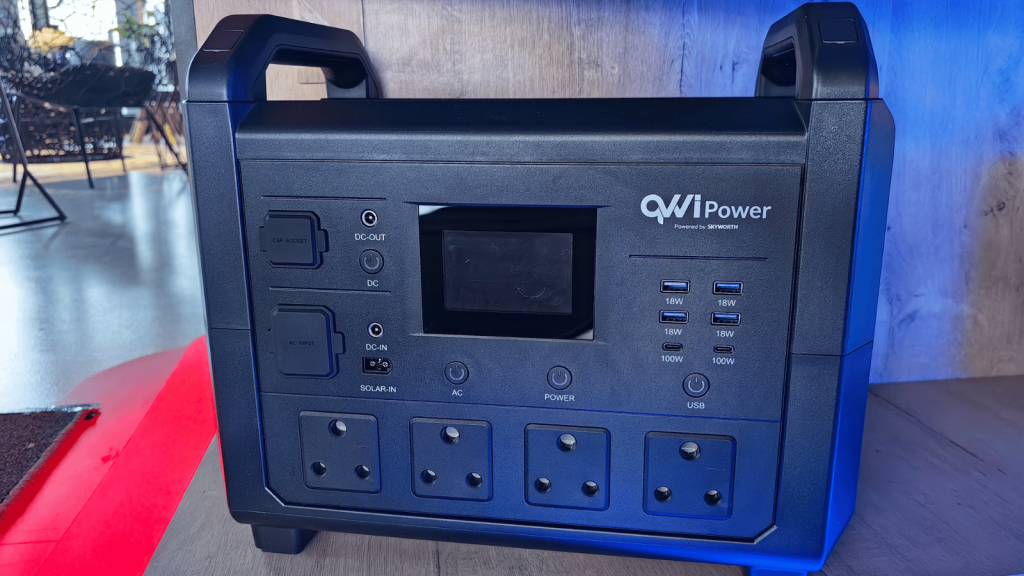 If you needed any more choices for a portable power station we spotted two more. The S1600 and S500 both sport LiFePo batteries. The former is packed with ports, 15 to be exact, including four AC plug sockets and two USB-C 100W charging ports. The latter model reduces those to nine in total, with two plug sockets and only one USB-C port. Want any more info than that and you’ll have to wait.
If you needed any more choices for a portable power station we spotted two more. The S1600 and S500 both sport LiFePo batteries. The former is packed with ports, 15 to be exact, including four AC plug sockets and two USB-C 100W charging ports. The latter model reduces those to nine in total, with two plug sockets and only one USB-C port. Want any more info than that and you’ll have to wait.
The QVWI stuff you can’t touch
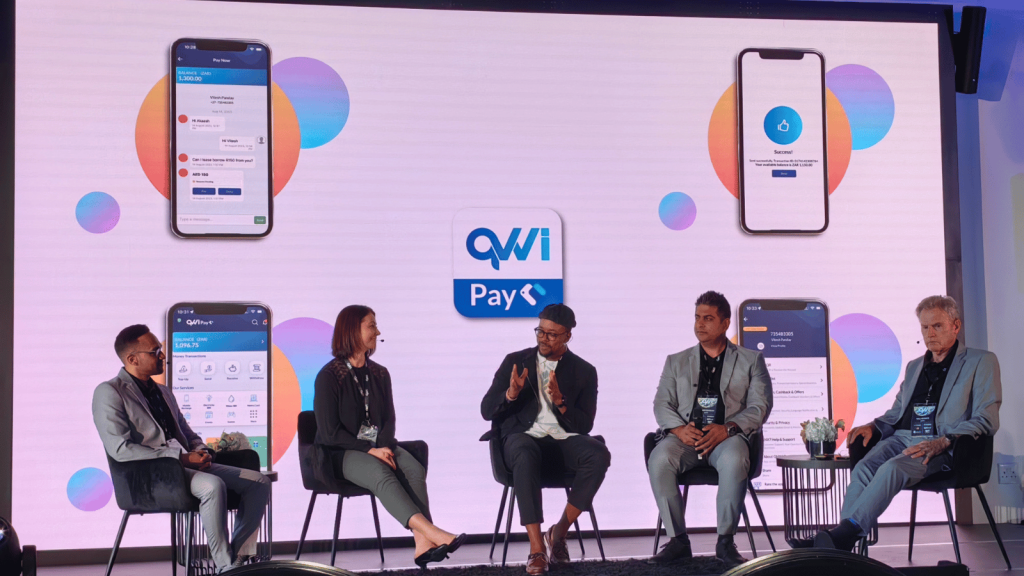 Along with hardware, QVWI is also planning to launch a software ecosystem, starting with its own payment solution – QVWIPay. Creative naming aside, this will work as a peer-to-peer system meaning you don’t need to have an existing bank account or get the banks involved at all. The app is aiming offer virtual card and wallet functionality and support for a range of payment mechanisms, including the familiar QR code.
Along with hardware, QVWI is also planning to launch a software ecosystem, starting with its own payment solution – QVWIPay. Creative naming aside, this will work as a peer-to-peer system meaning you don’t need to have an existing bank account or get the banks involved at all. The app is aiming offer virtual card and wallet functionality and support for a range of payment mechanisms, including the familiar QR code.
Based on the branding at the event, QVWIPay will be the first of many digital solutions from the new company. It also has plans for a contactless parking control system, a transport and supply chain management system, event entertainment via remote DJs, remote printing services, and a smart home ecosystem app to bring everything together. Whether or not these make it to South Africa is anyone’s guess but you can’t fault it for its ambition, especially having just launched in a new country.


